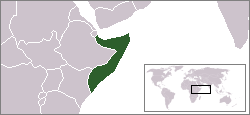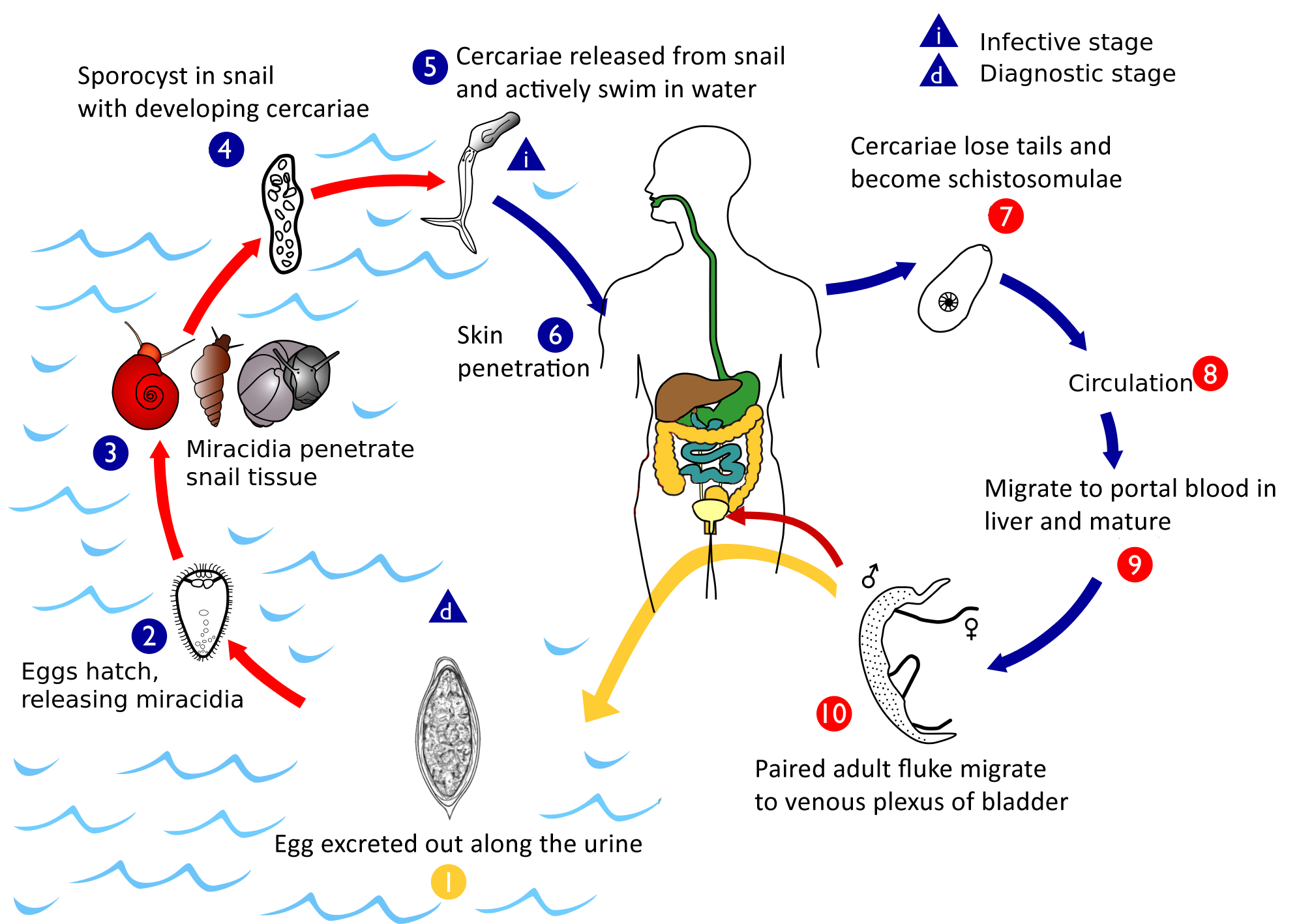|
Bulinus Abyssinicus
''Bulinus abyssinicus'' is a species of tropical freshwater snail with a sinistral shell, an aquatic gastropod mollusk in the family Planorbidae, the ramshorn snails and their allies. The specific name ''abyssinicus'' is after Abyssinia, which was the historic name for the Ethiopian Empire, where its type locality is. Distribution The distribution of ''Bulinus abyssinicus'' includes the Lower Valley of the Awash, Ethiopia and Somalia. The type locality is "southern Abyssinia", which means the Ethiopian Empire, now Ethiopia. Description The width of the shell is 9 mm. The height of the shell is 14 mm. The diploid chromosome number is 2n = 36. Ecology This small snail resides in marshes and in pools. This species is an intermediate host for ''Schistosoma bovis'' and ''Schistosoma haematobium''.Brown D. S. (1994). ''Freshwater Snails of Africa and their Medical Importance''. Taylor & Francis. . pages 225-226, 333-334. References Further reading * Ahmed M. D ... [...More Info...] [...Related Items...] OR: [Wikipedia] [Google] [Baidu] |
Eduard Von Martens
Eduard von Martens (18 April 1831 – 14 August 1904) also known as ''Carl'' or ''Karl Eduard von Martens'', was a German zoologist. Born in Stuttgart in 1831, von Martens attended university in University of Tübingen, Tübingen, where he graduated in 1855. He then moved to Berlin, where he would be based for the remainder of his career, both at the Zoological Museum of the Berlin University (from 1855) and, from 1859 on, at the . In 1860, he embarked on the ''Thetis'' expedition of the Prussian expedition to Eastern Asia. When the expedition returned to Europe in 1862, von Martens continued to travel around Maritime Southeast Asia for 15 months. He published the results of the "Thetis" expedition in two volumes, constituting the Zoologischer Theil of the "Preussische Expedition nach Ost-Asien." Vol. ii, consisting of 447 pages and 22 plates, contained a very full account of the land molluscs. Back in Berlin, von Martens was curator of the malacological and other invertebrate ... [...More Info...] [...Related Items...] OR: [Wikipedia] [Google] [Baidu] |
List Of Non-marine Molluscs Of Somalia
The non-marine molluscs of Somalia are a part of the molluscan fauna of Somalia ( wildlife of Somalia). A number of species of non-marine molluscs are found in the wild in Somalia. Freshwater gastropods Freshwater gastropods in Somalia include: Planorbidae * ''Bulinus abyssinicus'' (von Martens, 1866) Lymnaeidae * '' Radix natalensis'' (Krauss, 1848) Land gastropods Land gastropods in Somalia include: Streptaxidae * '' Somalitayloria'' Verdcourt, 1962 - endemic genusSutcharit C., Naggs F., Wade C. M., Fontanilla I. & Panha S. (2010). "The new family Diapheridae, a new species of ''Diaphera'' Albers from Thailand, and the position of the Diapheridae within a molecular phylogeny of the Streptaxoidea (Pulmonata: Stylommatophora)". ''Zoological Journal of the Linnean Society'' 160: 1-16. . Freshwater bivalves Freshwater bivalves in Somalia include: See also * List of marine molluscs of Somalia Lists of molluscs of surrounding countries: * List of non-marine mol ... [...More Info...] [...Related Items...] OR: [Wikipedia] [Google] [Baidu] |
Annals Of Tropical Medicine And Parasitology
''Pathogens and Global Health'' is a peer-reviewed medical journal published by Taylor & Francis. It covers tropical diseases, including their microbiology, epidemiology and molecular biology, as well as medical entomology, HIV/AIDS, malaria, and tuberculosis. The editor-in-chief is Andrea Crisanti (Imperial College London). History The journal was established by Sir Ronald Ross in 1906 as ''Annals of Tropical Medicine and Parasitology'' to share the results of the Liverpool School of Tropical Medicine's research and field expeditions. In May 2011, the journal was purchased by Maney Publishing, obtaining its current title in 2012, reflecting a broader focus including the biology, immunology, genetics, treatment, and control of pathogens of medical relevance beyond a regional definition. Abstracting and indexing The journal is abstracted and indexed in: According to the ''Journal Citation Reports'', the journal has a 2021 impact factor The impact factor (IF) or journal impac ... [...More Info...] [...Related Items...] OR: [Wikipedia] [Google] [Baidu] |
Malacological Review
Malacology is the branch of invertebrate zoology that deals with the study of the Mollusca (mollusks or molluscs), the second-largest phylum of animals in terms of described species after the arthropods. Mollusks include snails and slugs, clams, and cephalopods, along with numerous other kinds, many of which have shells. One division of malacology, conchology, is devoted to the study of mollusk shells. Malacology derives . Fields within malacological research include taxonomy, ecology and evolution. Applied malacology studies medical, veterinary, and agricultural applications; for example, mollusks as vectors of disease, as in schistosomiasis. Archaeology employs malacology to understand the evolution of the climate, the biota of the area, and the usage of the site. In 1681, Filippo Bonanni wrote the first book ever published that was solely about seashells, the shells of marine mollusks. The book was entitled: In 1868, the German Malacological Society was founded. Zoological ... [...More Info...] [...Related Items...] OR: [Wikipedia] [Google] [Baidu] |
Taylor & Francis
Taylor & Francis Group is an international company originating in England that publishes books and academic journals. Its parts include Taylor & Francis, Routledge, F1000 (publisher), F1000 Research or Dovepress. It is a division of Informa, Informa plc, a United Kingdom–based publisher and conference company. Overview The company was founded in 1852 when William Francis (chemist), William Francis joined Richard Taylor (editor), Richard Taylor in his publishing business. Taylor had founded his company in 1798. Their subjects covered agriculture, chemistry, education, engineering, geography, law, mathematics, medicine, and social sciences. Francis's son, Richard Taunton Francis (1883–1930), was sole partner in the firm from 1917 to 1930. In 1965, Taylor & Francis launched Wykeham Publications and began book publishing. T&F acquired Hemisphere Publishing in 1988, and the company was renamed Taylor & Francis Group to reflect the growing number of Imprint (trade name), imp ... [...More Info...] [...Related Items...] OR: [Wikipedia] [Google] [Baidu] |
Schistosoma Haematobium
''Schistosoma haematobium'' (urinary blood fluke) is a species of digenetic trematode, belonging to a group (genus) of blood flukes (''Schistosoma''). It is found in Africa and the Middle East. It is the major agent of schistosomiasis, the most prevalent parasitic infection in humans. It is the only blood fluke that infects the urinary tract, causing urinary schistosomiasis, and is the leading cause of bladder cancer (only next to tobacco smoking). The diseases are caused by the eggs. Adults are found in the venous plexuses around the urinary bladder and the released eggs travels to the wall of the urine bladder causing haematuria and fibrosis of the bladder. The bladder becomes calcified, and there is increased pressure on ureters and kidneys otherwise known as hydronephrosis. Inflammation of the genitals due to ''S. haematobium'' may contribute to the propagation of HIV. ''S. haematobium'' was the first blood fluke discovered. Theodor Bilharz, a German surgeon working in Cair ... [...More Info...] [...Related Items...] OR: [Wikipedia] [Google] [Baidu] |
Schistosoma Bovis
''Schistosoma bovis'' is a two-host blood fluke, that causes intestinal schistosomiasis in ruminants in North Africa, Mediterranean Europe and the Middle East. ''S. bovis'' is mostly transmitted by ''Bulinus'' freshwater snail species. It is one of nine haematobium group species and exists in the same geographical areas as ''Schistosoma haematobium'', with which it can hybridise. ''S. bovis-haematobium'' hybrids can infect humans, and have been reported in Senegal since 2009, and a 2013 outbreak in Corsica. Taxonomy and identification ''Schistosoma bovis'' is a digenetic, two-host blood fluke. It was discovered by Italian parasitologist Prospero Sonsino at Zagazig meat market in Egypt in 1876 from a bull. It is generally similar to other schistosomes, but Sonsino knew that it was larger and its eggs were different from those of the human species (first and only known schistosome at the time), ''Schistosoma haematobium'', discovered by a German physician Theodor Bilharz in 1852, ... [...More Info...] [...Related Items...] OR: [Wikipedia] [Google] [Baidu] |
Intermediate Host
In biology and medicine, a host is a larger organism that harbours a smaller organism; whether a parasitic, a mutualistic, or a commensalist ''guest'' (symbiont). The guest is typically provided with nourishment and shelter. Examples include animals playing host to parasitic worms (e.g. nematodes), cells harbouring pathogenic (disease-causing) viruses, a bean plant hosting mutualistic (helpful) nitrogen-fixing bacteria. More specifically in botany, a host plant supplies food resources to micropredators, which have an evolutionarily stable relationship with their hosts similar to ectoparasitism. The host range is the collection of hosts that an organism can use as a partner. Symbiosis Symbiosis spans a wide variety of possible relationships between organisms, differing in their permanence and their effects on the two parties. If one of the partners in an association is much larger than the other, it is generally known as the host. In parasitism, the parasite benefits at the ... [...More Info...] [...Related Items...] OR: [Wikipedia] [Google] [Baidu] |
Chromosome Number
Ploidy () is the number of complete sets of chromosomes in a cell, and hence the number of possible alleles for autosomal and pseudoautosomal genes. Sets of chromosomes refer to the number of maternal and paternal chromosome copies, respectively, in each homologous chromosome pair, which chromosomes naturally exist as. Somatic cells, tissues, and individual organisms can be described according to the number of sets of chromosomes present (the "ploidy level"): monoploid (1 set), diploid (2 sets), triploid (3 sets), tetraploid (4 sets), pentaploid (5 sets), hexaploid (6 sets), heptaploid or septaploid (7 sets), etc. The generic term polyploid is often used to describe cells with three or more chromosome sets. Virtually all sexually reproducing organisms are made up of somatic cells that are diploid or greater, but ploidy level may vary widely between different organisms, between different tissues within the same organism, and at different stages in an organism's life cycle. Half ... [...More Info...] [...Related Items...] OR: [Wikipedia] [Google] [Baidu] |
Type Locality (biology)
In biology, a type is a particular specimen (or in some cases a group of specimens) of an organism to which the scientific name of that organism is formally attached. In other words, a type is an example that serves to anchor or centralizes the defining features of that particular taxon. In older usage (pre-1900 in botany), a type was a taxon rather than a specimen. A taxon is a scientifically named grouping of organisms with other like organisms, a set that includes some organisms and excludes others, based on a detailed published description (for example a species description) and on the provision of type material, which is usually available to scientists for examination in a major museum research collection, or similar institution. Type specimen According to a precise set of rules laid down in the International Code of Zoological Nomenclature (ICZN) and the International Code of Nomenclature for algae, fungi, and plants (ICN), the scientific name of every taxon is almost a ... [...More Info...] [...Related Items...] OR: [Wikipedia] [Google] [Baidu] |
List Of Non-marine Molluscs Of Ethiopia
The non-marine molluscs of Ethiopia are a part of the molluscan fauna of Ethiopia (wildlife of Ethiopia). Ethiopia is an inland country, so there are no marine molluscs. A number of species of non-marine molluscs are found in the wild in Ethiopia. Freshwater gastropods Ampullariidae * '' Pila speciosa'' Thiaridae * '' Cleopatra ferruginea'' * ''Melanoides tuberculata'' (O. F. Müller, 1774) Planorbidae * '' Ancylus ashangiensis'' * '' Ancylus regularis'' * '' Biomphalaria barthi'' * ''Bulinus abyssinicus'' (von Martens, 1866) * ''Bulinus hexaploidus'' * ''Bulinus octaploidus'' Lymnaeidae * ''Radix natalensis'' (Krauss, 1848) Land gastropods Freshwater bivalves See also Lists of molluscs of surrounding countries: * List of non-marine molluscs of Sudan, Wildlife of Sudan * List of non-marine molluscs of Djibouti, Wildlife of Djibouti * List of non-marine molluscs of Eritrea, Wildlife of Eritrea * List of non-marine molluscs of Somalia, Wildlife of Somalia * List ... [...More Info...] [...Related Items...] OR: [Wikipedia] [Google] [Baidu] |


.jpg)

.jpg)
.jpg)